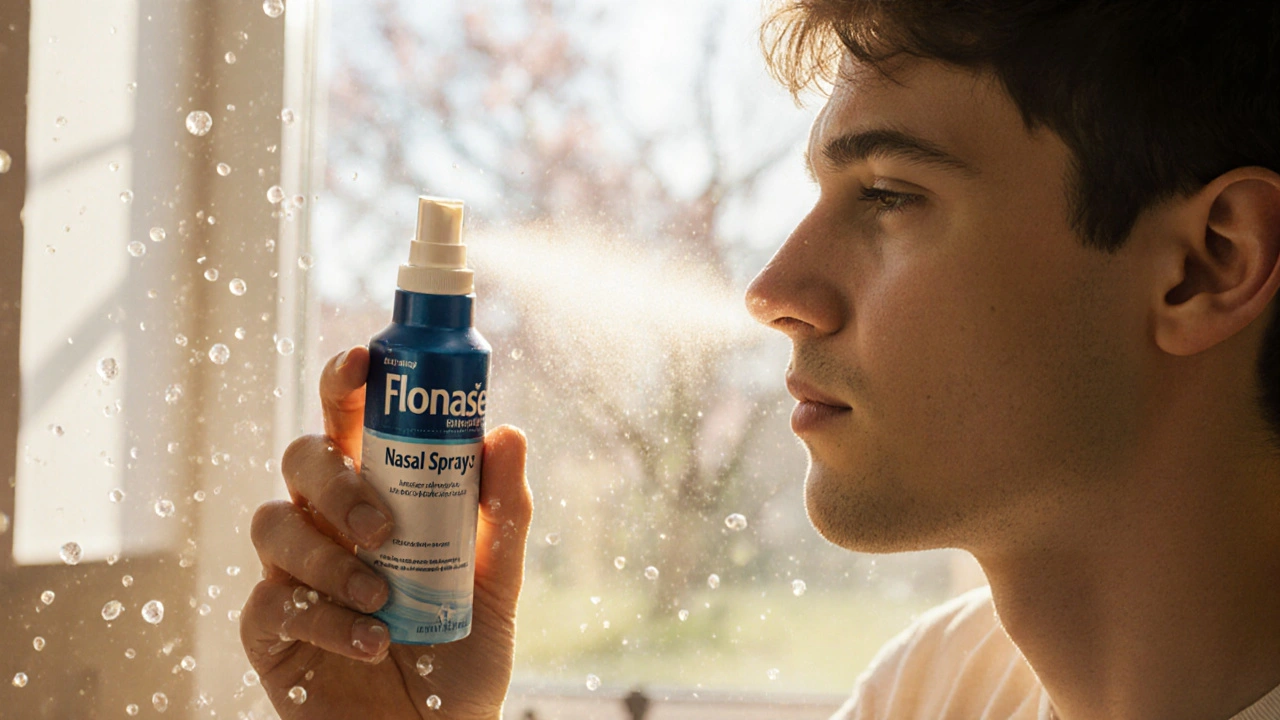
Allergy Nasal Spray Comparison Tool
Comparison Details
| Product | Active Ingredient | Prescription? | Onset Time | Duration | Price Range | Side Effects |
|---|---|---|---|---|---|---|
| Flonase | Fluticasone propionate | Both OTC and Rx | 12-24 hrs | 24 hrs | $12-$20 | Nasal irritation, slight bleeding |
| Nasacort | Triamcinolone acetonide | OTC | 12-24 hrs | 24 hrs | $10-$18 | Nasal dryness, mild taste |
| Rhinocort | Budesonide | OTC | 8-12 hrs | 24 hrs | $11-$19 | Ear pressure, slight nosebleed |
| Dymista | Azelastine + Fluticasone | Prescription | 1-2 hrs (antihistamine) & 12-24 hrs (steroid) | 24 hrs | $30-$45 | Metallic taste, headache |
When allergy season hits, the first thing most people reach for is a nasal spray that promises fast relief. Flonase is a fluticasone propionate nasal spray approved for treating allergic rhinitis, sinus congestion, and seasonal allergies. But with a growing shelf of competing sprays, the question becomes: does Flonase still hold the crown, or are there better, cheaper, or more convenient options?
Key Takeaways
- Flonase delivers a potent steroid (fluticasone) that works inside the nose, reducing inflammation within 12‑24 hours.
- Nasacort (triamcinolone) and Rhinocort (budesonide) are over‑the‑counter steroids with similar efficacy but slightly different onset times.
- Dymista combines an antihistamine (azelastine) with fluticasone for people who need both anti‑inflammatory and antihistamine action.
- Oral antihistamines like Claritin and Zyrtec work systemically; they’re useful for milder symptoms or when a spray isn’t tolerated.
- Choosing the right spray depends on prescription status, price, side‑effect sensitivity, and how quickly you need relief.
How Flonase Works
Flonase’s active ingredient, fluticasone propionate, belongs to a class called corticosteroids. When sprayed into the nostrils, it binds to glucocorticoid receptors in the nasal mucosa, shutting down the release of inflammatory mediators such as histamine, leukotrienes, and cytokines. This reduces swelling, mucus production, and the itchiness that define allergic rhinitis.
The drug starts to calm inflammation within 12‑24 hours, reaching peak effect after about three days of regular use. Because it works locally, systemic absorption is minimal-less than 2% reaches the bloodstream-so the risk of steroid‑related side effects is low for most users.
Top Alternative Nasal Sprays
Below are the most common steroid‑based sprays that compete with Flonase:
- Nasacort - contains triamcinolone acetonide, available OTC, similar onset (12‑24h) and duration (24h).
- Rhinocort - uses budesonide, OTC in many countries, slightly faster onset (8‑12h).
- Dymista - a combination of azelastine (antihistamine) and fluticasone; prescription only, provides both anti‑inflammatory and antihistamine action within minutes.
- Claritin - oral loratadine antihistamine; not a spray, but often used when nasal sprays cause irritation.
- Zyrtec - oral cetirizine antihistamine; works systemically, useful for eye itching and hives.
All these products target allergic rhinitis, a condition affecting roughly 20% of the U.S. population according to the American Academy of Allergy, Asthma & Immunology.
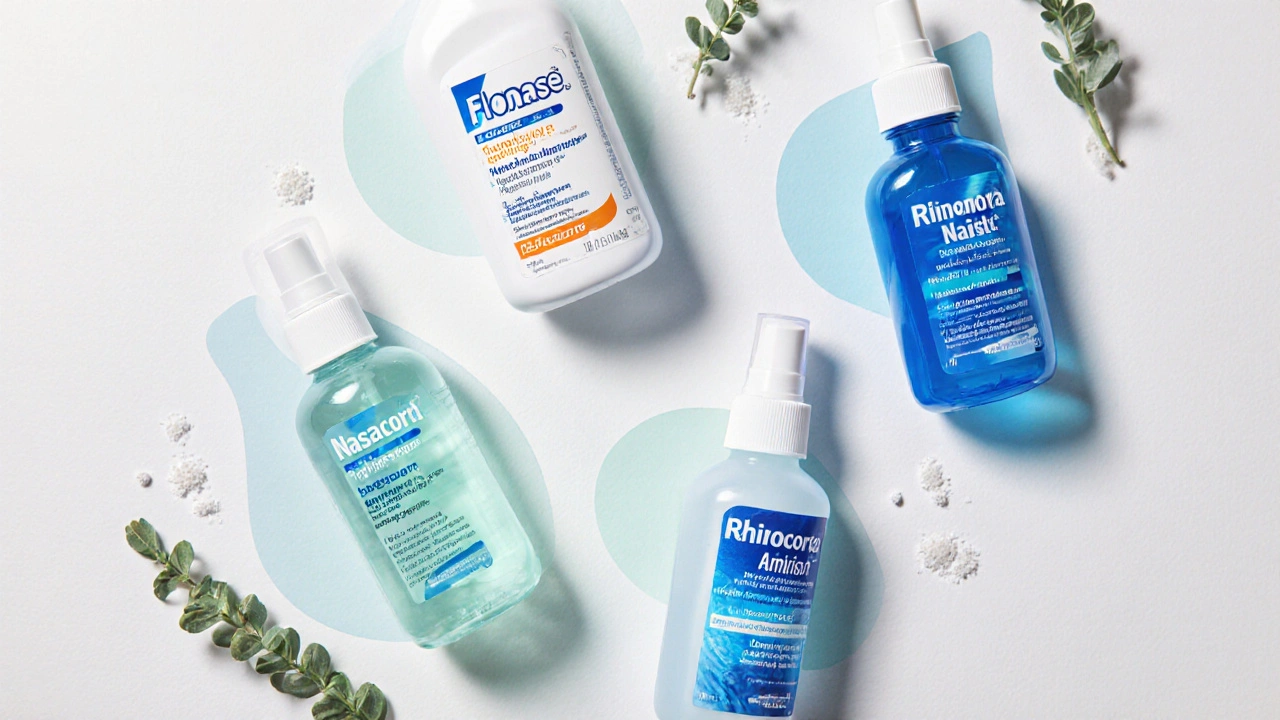
Side‑Effect Profile: What to Watch For
Because steroids act locally, the most common side effects are nasal irritation, mild bleeding, or a temporary bitter taste. Systemic effects-like adrenal suppression-are rare when used as directed.
Nasacort and Rhinocort share a similar safety profile. Dymista can cause a metallic taste due to the antihistamine component, while oral antihistamines may cause drowsiness (though newer generations like loratadine and cetirizine are largely non‑sedating).
| Product | Active Ingredient | Prescription? | Onset (hrs) | Duration (hrs) | Typical Price (USD) | Common Side Effects |
|---|---|---|---|---|---|---|
| Flonase | Fluticasone propionate | Both OTC and Rx (higher‑dose) | 12‑24 | 24 | $12‑$20 for 100sprays | Nasal irritation, slight bleeding |
| Nasacort | Triamcinolone acetonide | OTC | 12‑24 | 24 | $10‑$18 for 100sprays | Nasal dryness, mild taste |
| Rhinocort | Budesonide | OTC | 8‑12 | 24 | $11‑$19 for 100sprays | Ear pressure, slight nosebleed |
| Dymista | Azelastine+Fluticasone | Prescription | 1‑2 (antihistamine) & 12‑24 (steroid) | 24 | $30‑$45 for 60sprays | Metallic taste, headache |
| Claritin | Loratadine (oral) | OTC | 1‑2 (systemic) | 24‑48 | $8‑$15 for 30 tablets | Rare drowsiness |
| Zyrtec | Cetirizine (oral) | OTC | 1‑2 | 24‑48 | $9‑$16 for 30 tablets | Possible mild sedation |
Which Spray Is Right for You?
Consider these three decision points:
- Prescription vs. OTC - If you prefer a quick trip to the pharmacy, Nasacort or Rhinocort are solid choices. For higher‑dose Flonase (50µg per spray) you’ll need a prescription, but the standard 50µg‑dose is now OTC.
- Speed of relief - Dymista beats pure steroids because the antihistamine component starts acting in minutes, making it ideal for breakthrough symptoms.
- Cost tolerance - Generic OTC sprays average $12‑$20 per bottle, while prescription combo sprays can exceed $40 per month. Oral antihistamines are the cheapest, but they don’t target nasal inflammation directly.
If you have a history of nosebleeds or sensitive nasal lining, start with a lower‑volume spray like Rhinocort and use a saline rinse beforehand.
Practical Tips for Best Results
- Shake the bottle gently before each use.
- Blow your nose gently to clear mucus, then tilt your head forward 10° and spray while breathing in gently through the nose.
- Avoid blowing your nose for at least 10minutes after spraying to let the medication settle.
- Clean the nozzle with warm water weekly to prevent bacterial buildup.
- Store sprays at room temperature; extreme heat can degrade the steroid.
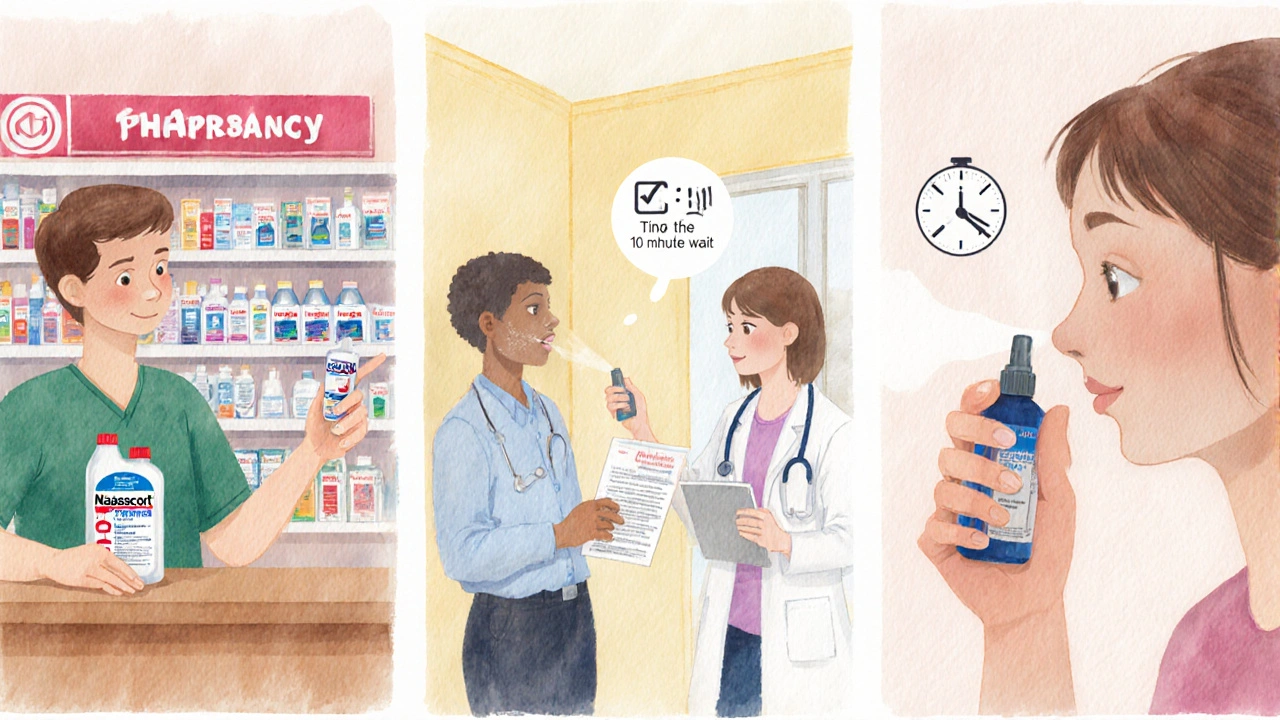
When to See a Doctor
If you experience any of the following, schedule a visit:
- Persistent nosebleeds after more than two weeks of use.
- Severe facial pain or sinus pressure that doesn’t improve.
- Any signs of infection such as fever, colored nasal discharge, or swelling around the eyes.
- Need for a higher‑dose steroid or a combination therapy like Dymista.
An allergist can perform skin‑prick testing to pinpoint the exact triggers, allowing you to tailor your medication regimen more precisely.
Next Steps & Troubleshooting
Start with an OTC spray (Flonase, Nasacort, or Rhinocort) for one week. Track symptom relief in a simple log: note itchiness, congestion, and any side effects each day. If after 7‑10 days you’re still sneezing more than three times a day, consider stepping up to a combo spray like Dymista or adding an oral antihistamine. If side effects become bothersome, switch the steroid base-some people tolerate budesonide (Rhinocort) better than fluticasone.
Frequently Asked Questions
Can I use Flonase and an oral antihistamine together?
Yes. Combining a steroid spray with an oral antihistamine like loratadine often provides faster, more complete relief because the spray tackles nasal inflammation while the antihistamine blocks systemic histamine effects.
Is Flonase safe for children?
Flonase is FDA‑approved for children ages 4 and up at the lower 50µg dose (one spray per nostril). Always follow pediatric dosing guidelines and monitor for irritation.
How does Dymista differ from using Flonase alone?
Dymista pairs fluticasone with azelastine, an antihistamine that works within minutes. It’s ideal for people who need rapid itch relief plus the anti‑inflammatory benefits of a steroid.
Why do my nasal sprays sometimes cause a bitter taste?
The bitter taste usually comes from the spray hitting the back of the throat. Tilting your head slightly forward and inhaling gently can reduce runoff. Rinsing the mouth after use also helps.
Are there any long‑term risks with daily steroid nasal sprays?
Long‑term studies show that daily use of low‑dose intranasal steroids is safe for most adults. Rarely, high cumulative doses can affect the adrenal axis, so physicians monitor patients who need >400µg/day for more than a year.
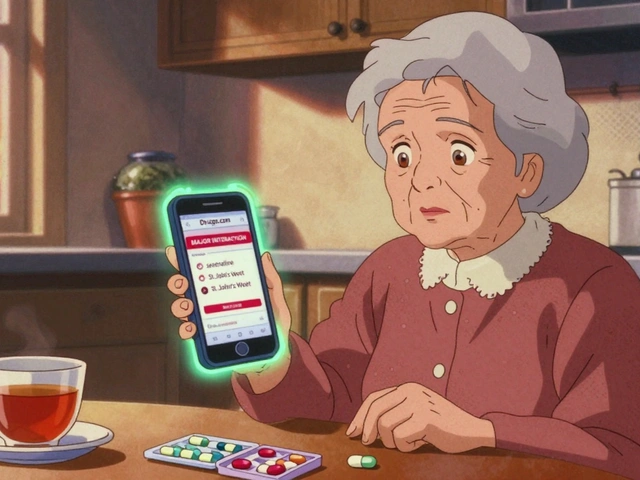
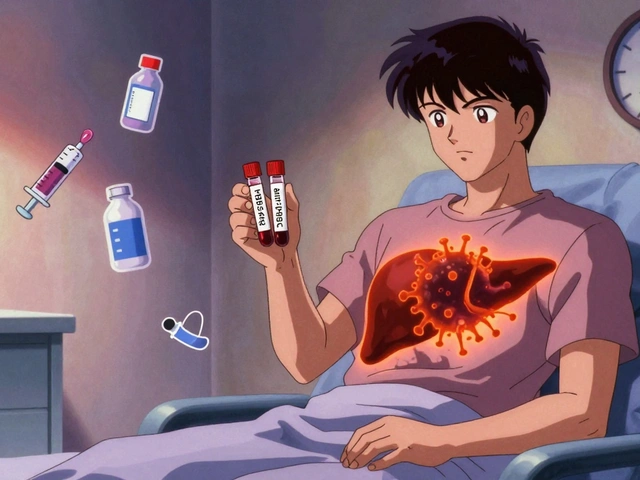
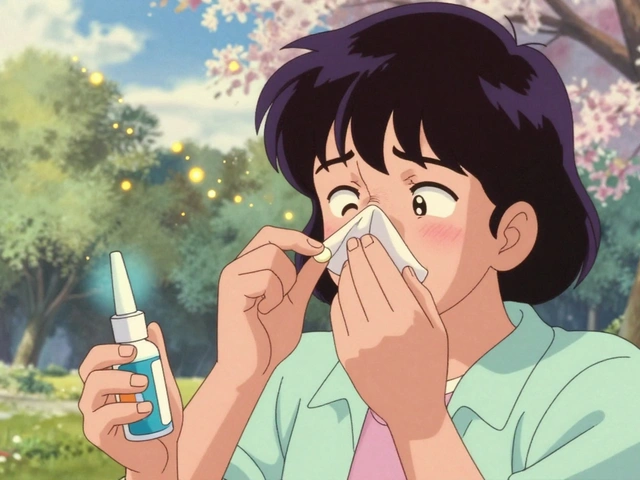


10 Comments
Flonase may be the gala of nasal sprays, but the real stars are hidden in the cheap aisles.
If you think a $15 spray can cure your whole allergy saga, you’re buying a fantasy, not a remedy.
Reading that table feels like watching a bad sequel. Flonase isn’t magic, it’s just a steroid spray. Nasacort and Rhinocort sit on the same shelf for a reason – they work similarly. The price difference is peanuts compared to your time spent hunting for “the best”. If you want fast relief, Dymista’s combo might help but it’s a prescription hassle.
Oh, the grand conspiracy of pharma, how they hide the perfect spray behind a wall of patents. Sure, Flonase is “approved”, but who approved the approval? The real secret is that the market pushes you to buy the brand you can’t pronounce. And the side‑effects? Just a sprinkle of nosebleeds to keep you buying more.
i think the best spray is the one that dont make you feel like a british soldier after a night in the trenches. flonase is ok but nasacort is cheaper and works just as good. the tables look the same but the price tag is what matters most. dont be fooled by fancy packaging its all a marketing trick
Your clinical overview reads like a bored professor’s lecture, lacking any real passion. The real drama lies in how often sufferers end up switching sprays after a week of disappointment. If you’re not feeling the relief, maybe the problem isn’t the spray but your expectations.
When choosing a nasal spray, start by confirming whether you need a prescription. For most adults, OTC options like Flonase, Nasacort, or Rhinocort provide comparable relief; pick the one that fits your budget and tolerability.
If you need rapid symptom control, Dymista’s antihistamine‑steroid combo works within minutes, but it requires a doctor’s script and costs more.
Remember to prime the spray (shake, prime the nozzle) and use proper technique: tilt your head slightly forward, inhale gently, and avoid blowing your nose for ten minutes after each use.
Finally, track your symptoms for a week; if there’s no noticeable improvement, consider switching to a different steroid or adding an oral antihistamine.
Great advice, Tara, especially the part about priming the nozzle, which many users overlook,; also, the reminder to avoid blowing your nose right after spraying is crucial,; and don’t forget to rinse the tip weekly to prevent bacterial buildup,; finally, keeping a symptom log will really help you see if the spray is working or not, :)
Allergy nasal sprays: choose based on prescription need, onset speed, and budget.
Sure, because a 12‑word summary totally captures the nuance of immunology.